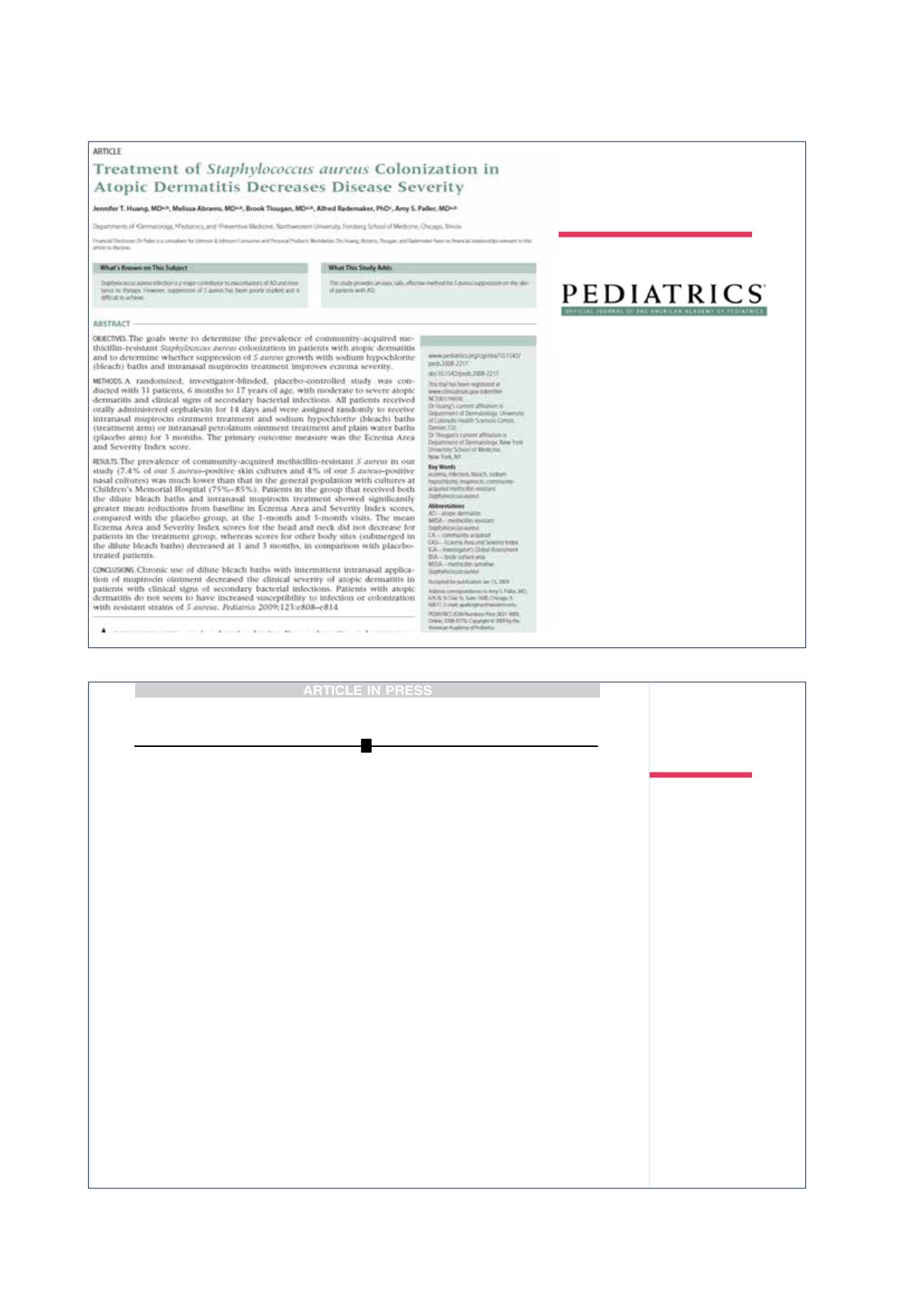
438
Dermatitis atópica, más allá de la piel
O
RIGINAL ARTICLE
Wet dressing therapy in conjunction with topical
corticosteroids is effective for rapid control of severe
pediatric atopic dermatitis: Experience with 218
patients over 30 years at Mayo Clinic
Tushar S. Dabade, MD, Dawn M. R. Davis, MD, David A. Wetter, MD, Jennifer L. Hand, MD,
Marian T. McEvoy, MD, Mark R. Pittelkow, MD, Rokea A. el-Azhary, MD, and Mark D. P. Davis, MD
Rochester, Minnesota
Background:
At our institution, hospitalization for intensive treatment (combining wet dressings and
topical corticosteroids) is a primary intervention for severe pediatric atopic dermatitis. Prior reports of this
treatment are limited.
Objective:
We sought to review the efficacy of wet dressings for pediatric atopic dermatitis.
Methods:
We reviewed records of pediatric patients hospitalized from January 1, 1980, through April 20,
2010, who received intensive topical treatments for atopic dermatitis.
Results:
In total, 218 pediatric patients had widespread atopic dermatitis severe enough to warrant
hospitalization, despite prior outpatient topical treatments and other interventions such as immunomo-
dulating agents, phototherapy, dietary manipulation, or contact allergen avoidance. Mean (SD) age was
5.97 (4.91) years (range, 2 months-17 years); 141 patients (65%) were female. There were 266
hospitalizations: 192 patients (72%) had one admission, 15 (6%) had two admissions, and 11 (4%) had 3
or more admissions. Mean (SD) duration of hospitalization was 3.61 (2.23) days (range, 1-16 days). Upon
discharge, all patients showed improvement. In 239 of 266 hospitalizations, patient records showed
quantification of improvement (global assessment): 121 (45%) had 75% to 100% improvement, 102 (38%)
had 50% to 75% improvement, and 16 (6%) had 25% to 50% improvement.
Limitations:
This was a retrospective study.
Conclusion:
Intensive inpatient treatment (with wet dressings and topical corticosteroids) was highly
effective in controlling severe and recalcitrant atopic dermatitis. Intensive topical treatment, although
underused, is an effective first-line approach for patients with severe atopic dermatitis. ( J Am Acad
Dermatol
10.1016/j.jaad.2011.06.025
.)
Key words:
adverse effects; atopic dermatitis; corticosteroids; efficacy; recalcitrant; wet dressings.
P
ediatric atopic dermatitis is a common,
chronic, pruritic, inflammatory skin disease
that affects 10% to 20% of children world-
wide.
1
It causes considerable morbidity, including
difficulties initiating and maintaining sleep, emo-
tional disturbances for the affected child, and familial
financial, social, and emotional problems.
2
Atopic dermatitis can be difficult to control.
Multiple treatment interventions have been de-
scribed.
3
In the past couple of decades, the effec-
tiveness of intensive topical treatments for atopic
dermatitis has been ‘‘rediscovered,’’ beginning with
the 1991 description by Goodyear et al
4
of ‘‘wet
wrap dressings.’’ Yet many patients with severe
From the Department of Dermatology, Mayo Clinic.
Reprint requests: Mark D. P. Davis, MD, Department of


